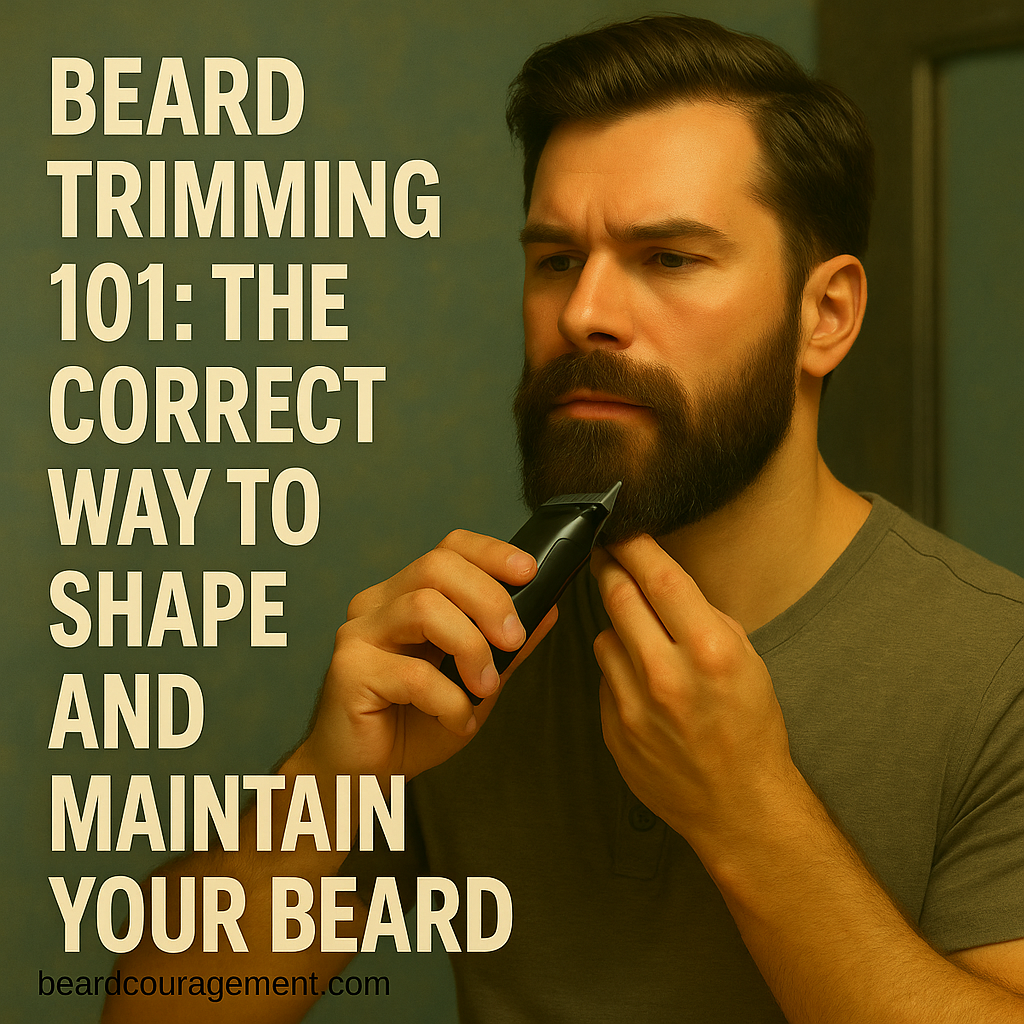
A great beard isn’t just grown — it’s maintained. Trimming is what separates a rugged, intentional look from an unkempt one. Whether you’re new to grooming or refining your style, learning how to trim your beard correctly keeps it sharp, healthy, and perfectly shaped for your face.
Why Trimming Is Essential
Even if you’re growing your beard long, regular trimming keeps it looking full and defined. It removes split ends, maintains symmetry, and gives your beard structure.
A well-trimmed beard:
- Highlights your jawline and facial shape
- Prevents scraggly ends
- Promotes even growth
Step 1: Start with a Clean, Dry Beard
Always wash your beard before trimming to remove dirt and oil. Pat it completely dry — wet hair looks longer and can cause uneven cuts.
Pro Tip: Comb through your beard to straighten hairs and reveal its natural flow before trimming.
Step 2: Choose Your Shape
Decide on your overall look before touching the trimmer.
- Square face: Keep sides short and focus on a fuller chin.
- Round face: Lengthen the chin and taper the cheeks.
- Oval face: Maintain even proportions all around.
- Rectangular face: Keep the sides slightly fuller for balance.
Visualize the outline first — your beard should complement your features, not fight them.
Step 3: Trim Gradually
Start with a longer guard and work your way down. Trim in small passes rather than large chunks — you can always take off more, but you can’t add it back.
Use your trimmer for the bulk of the work, and finish details around the mustache and edges with scissors for precision.
Step 4: Define the Neckline and Cheekline
A crisp neckline and soft cheekline make any beard look intentional.
- Neckline: Trim about one inch above your Adam’s apple, curving upward toward your ears.
- Cheekline: Follow your natural growth for a clean but natural border.
Avoid trimming the neckline too high — it shortens your beard’s depth and makes it appear thinner.
Step 5: Even Out and Blend
Use slightly different guard lengths to blend your beard naturally — shorter on the sides, longer on the chin. This tapering effect adds structure and symmetry. Comb through after each pass to check for stray hairs.
Step 6: Finish Strong
After trimming, rinse off stray hairs and apply beard oil or balm to moisturize and soften. The skin beneath your beard will thank you — hydrated follicles grow healthier and more resilient over time.
How Often Should You Trim?
- Short beards: Every 1–2 weeks
- Medium to long beards: Every 3–4 weeks
- Detail shaping: As needed between full trims
Consistency builds confidence. Even a quick touch-up keeps your beard looking polished.
Key Takeaways
- Trim on a dry beard for accuracy.
- Match your beard shape to your face type.
- Start long and go shorter gradually.
- Use oil or balm afterward to maintain healthy growth.
